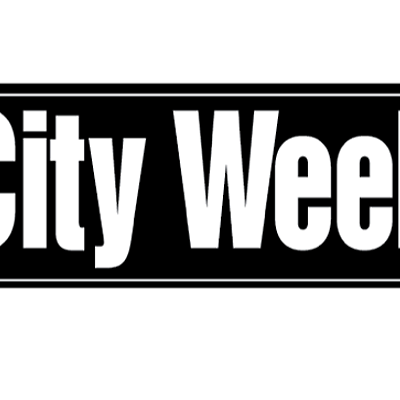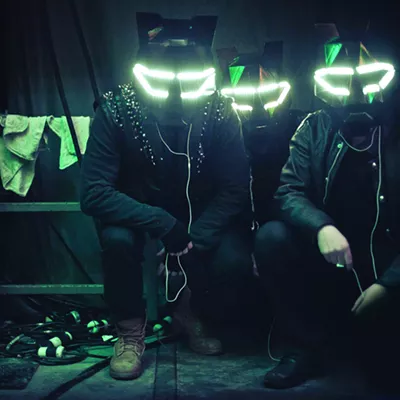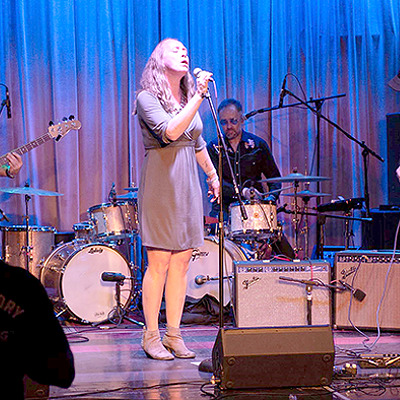"In Manhattan, there are people who work passionately in community gardens," Eiko said from her own Manhattan apartment one evening last week. "We have abandoned spaces, and 40 or 50 people make a tiny bit of green there. It's an amazing miracle.
"Then," she added, "Sept. 11 happened."
The Japanese-born dance duo, which will bring its trademark slow movement to Pima College for two performances this weekend, "felt stunned, violated, like everyone in Manhattan," she said.
Through an artists' residency program, the pair had actually had a studio on the 92nd floor of one of the Twin Towers for the calendar year 2000. The promising young visual artist who won the studio residency for 2001--and moved into the studio when Eiko & Koma moved out--perished.
"I saw the tower fall," Eiko said. "I was so familiar with every little corner. It was more than shocking."
New Yorkers since 1976, the pair, who choreograph and dance their own works, at first felt paralyzed. Then they started noticing that the city's parks and gardens had become even more essential after the attacks. Families plastered them with signs, begging for news of the missing. The grief-stricken and the disconsolate gathered in them to light candles and say prayers. The Dutch government sent thousands of daffodil bulbs, and when the flowers bloomed in public gardens the following March,
"Yellow was everywhere," Eiko recalled. "It was saying, 'We care about you.'"
Their incipient dance piece about public spaces evolved into "Offering," a new dancework shaped by the tragedy. It opens the concert this weekend. Partially funded by a commission from the University of Arizona, "Offering" debuted in Battery Park just a block from Ground Zero.
Within the next two weeks, Eiko & Koma danced it at seven other outdoor spaces in New York; later they took it on the road to Poland and Estonia. The dance was conceived originally as a "mobile work" to be performed in neighborhoods, but this month, Eiko & Koma took it inside for the first time. The Pima College concerts will mark the second time the work has been danced on an indoor stage.
Performed to the live clarinet music of David Krakauer, the work is a "ritual of regeneration after loss," Eiko said. "Our costumes are yellow, like daffodils. We are using a mound of dirt. It's soil that absorbs blood and tears. Crops come out of it. It evokes the essence of death and rebirth."
Eiko & Koma's distinctive and sometimes difficult work has won them a Guggenheim, a McArthur and a Bessie, and invitations to dance and choreograph throughout the U.S. and abroad. At their last performance in Tucson, some six years ago, the pair moved through their movement like dancers in slo-mo, with each gesture distinct and deliberate.
"It's a slower tempo," Eiko acknowledged. "We present something that is not what you see on TV. It's a whole different sense of time, the difference between fast food and a very nice dinner at a friend's house."
If their languid choreography is worlds away from the explosive movement of much of contemporary dance, Eiko & Koma have long labored outside the modern dance mainstream. In Japan, in the late '60s, as students of law and political science, they began questioning governmental authority and cultural conformity. They turned to experimental dance, and hoping to avoid traditional Japanese forms, studied with Kazuo Ohno, whom Eiko calls the "founding father of the Japanese avant-garde."
Determined not be become "disciples" of Ohno or anybody else, they decided to leave the country. Travel to the United States was difficult for Asian people during those years of the Vietnam War, Eiko said, and they settled on Germany.
"We were very interested in German Expressionism, but leaving Japan was more important than where we were going," she said.
Once in Europe, the pair studied under Manja Chmiel, who in turn had worked for many years with Mary Wigman, a towering figure of Neue Tanz, early German modern dance. They started performing.
"People who saw us told us, 'You've got to go to New York,'" Eiko said. In 1976, they did, and once in the Big Apple, "We never left."
Eiko said they conceived this weekend's concerts as "condensed," seamless evenings, just 75 minutes long, uninterrupted by an intermission. "Offering" flows into the second work, "Snow," which debuted in 1999 as a commissioned piece at the American Dance Festival.
"It's romantic, a little ghost story, a lover's duet. They could have died and come out in the snow at night when it's quiet. It keeps snowing in the piece. We hope the snow will give a sense of cleansing."
The music, "Koujo no Tuki (Moon Over Ruined Castle)," is a taped composition by Japanese composer Rentaro Taki. "Night Tide," set to the music of Deuter and David Krakauer, concludes the evening.
"Bones are left in a field," Eiko said. "It involves nudity--not flesh nudity, but really remains. It's not about desire or ambition--just the remaining desire to get close to somebody else. We still need to be mindful of the most essential part of our lives. We go through these different landscapes, but it's all about love."














